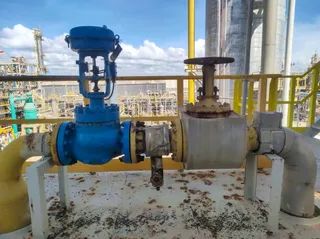Introduction
China Control valves are critical components in regulating the flow of liquids, gases, and other media within industrial systems. They ensure optimal process performance by adjusting flow rates and pressures as needed. A key factor influencing a valve’s operation, efficiency, and durability is the direction of flow through the valve.
This article explores the two primary flow directions for control valves—Flow to Open (FTO) and Flow to Close (FTC)—and examines how each affects valve performance, lifespan, flow capacity, and selection criteria. With this knowledge, engineers and operators can choose the most suitable valve configuration for their specific needs and operating conditions.
Types of Control Valve Flow Direction
Control valves operate with flow moving either to open or to close the valve plug against the seat:
1. Flow to Open (FTO)
In FTO valves, the fluid pushes the valve plug away from the seat, assisting in opening the valve. This design suits applications where the valve remains open for long periods under normal conditions. Since flow aids in opening, there is less wear on the plug and seat, making these valves more durable when operating continuously in open positions.
2. Flow to Close (FTC)
In FTC valves, the fluid pressure pushes the valve plug toward the seat, helping to close the valve tightly. This configuration is ideal when the valve is normally closed and requires a secure shut-off, especially under high pressure. The flow reinforces sealing, reducing leakage risk in critical systems.
Impact of Flow Direction on Valve Lifespan and Performance
1. Wear and Tear
- FTO Valves: Flow assists opening, reducing friction between the plug and seat. This results in less wear and longer valve life, suitable for applications like water treatment or industrial processes with sustained open positions.
- FTC Valves: Flow pushes the plug against the seat, increasing sealing surface wear, especially in high-pressure environments. More frequent maintenance may be required.
2. Sealing Efficiency
- FTO Valves: Generally provide less tight sealing due to flow direction; minor leakage may occur, making them less suited for leak-sensitive applications.
- FTC Valves: Offer superior sealing as flow pressure enhances closure, making them ideal for hazardous or high-precision processes.
3. Maintenance Requirements
- FTO Valves: Lower wear leads to less frequent maintenance and longer service intervals, reducing operational downtime.
- FTC Valves: Higher stress on sealing surfaces results in more frequent inspections and possible part replacements.
Comparison of Flow Capacities
- FTO Valves: Typically have higher flow capacities because flow direction reduces resistance, allowing efficient handling of large fluid volumes—ideal for water distribution, HVAC, and large-scale industrial systems.
- FTC Valves: Generally have lower flow capacities due to increased resistance as flow pushes to close the valve; better suited for applications prioritizing precise flow control over volume.
How to Choose Between FTO and FTC
Application Requirements
- FTO: Best when valves need to stay open long or handle high flow rates (e.g., water treatment, industrial processes, HVAC).
- FTC: Preferred for tight shut-off and precise flow control (e.g., chemical processing, oil and gas, steam systems).
Operating Pressure and Flow Conditions
- FTO: Well-suited for high-pressure, high-flow systems where flow aids valve opening.
- FTC: Performs best under moderate pressure where sealing efficiency is critical.
Maintenance and Lifespan
- FTO: Choose if minimizing maintenance and maximizing valve lifespan are priorities.
- FTC: Opt for when sealing integrity outweighs increased maintenance needs.
Cost and Availability
Consider both upfront and long-term costs. FTO valves may have higher initial costs but lower maintenance expenses, while FTC valves might be cheaper upfront but require more servicing.
Conclusion
The flow direction of a control valve—Flow to Open or Flow to Close—profoundly impacts its performance, durability, and suitability for different applications. Understanding these differences enables better valve selection, optimizing system reliability and reducing operational costs.
Whether your system demands high flow capacity with extended valve openness or tight shut-off with precise control, selecting the appropriate flow direction ensures the best possible valve performance and longevity. Know more about Google SEO Directory





Comments